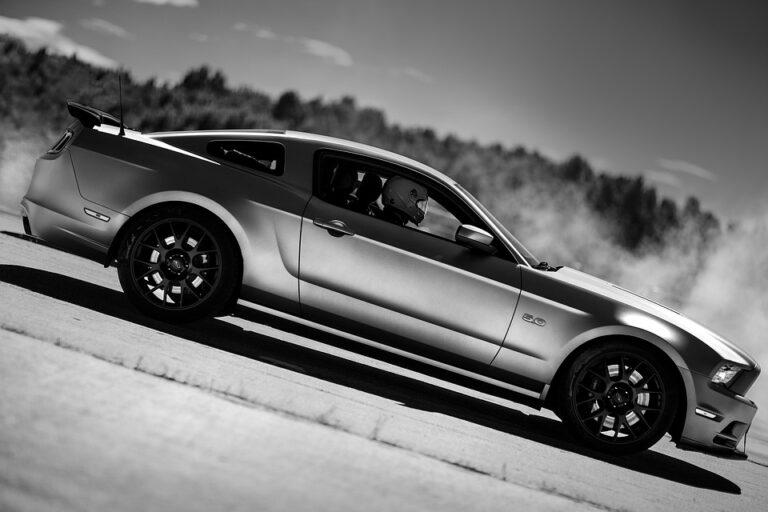Behind the Wheel: Real-World Performance Testing of the Fastest Cars
When it comes to performance cars, enthusiasts often find themselves captivated by mind-boggling speed and precision engineering. However, what remains largely hidden from the casual observer is the extensive testing these vehicles undergo to claim their positions at the top of the automotive food chain. Buckle up as we dive into the world of real-world performance testing of the fastest cars.
Understanding Performance Cars
What Are Performance Cars?
Performance cars are designed with speed, handling, and agility in mind. These vehicles usually differ from regular cars by featuring powerful engines, advanced aerodynamics, and sophisticated suspension systems. Every ounce of engineering is aimed at providing an exhilarating driving experience.
The Importance of Real-World Testing
While laboratory conditions provide a baseline for speed and performance, real-world testing is crucial for understanding how these cars operate in everyday situations. Variables such as weather, road conditions, and driver behavior all play a significant role in assessing a car’s capabilities.
Real-World Testing Methods
1. Acceleration Tests
Acceleration tests are among the most thrilling aspects of performance car testing. Engineers often use specialized equipment to measure how quickly a car can reach 0-60 mph. These tests don’t just measure speed; they also assess traction control and the effectiveness of launch systems. For instance, the Tesla Model S P100D’s “Ludicrous Mode” showcases how electric cars can compete with traditional gas-powered vehicles in these tests.
2. Braking Performance
Equally essential is understanding a vehicle’s braking capabilities. Performance cars undergo rigorous testing to determine their stopping distances at various speeds. This is usually done by running the car at high speeds down a closed track and slamming the brakes. The results inform engineers about the car’s brake system efficiency and overall safety.
3. Handling and Cornering
Another critical aspect of performance testing is assessing how cars handle sharp turns and bends. This involves taking vehicles to demanding tracks like the Nürburgring or Laguna Seca, where drivers push the limits of these machines. The balance between understeer and oversteer, as well as the responsiveness of steering, is evaluated to ensure a thrilling but safe driving experience.
4. Fuel Efficiency Tests
Interestingly, performance doesn’t just equate to speed. Real-world testing examines fuel efficiency under varying driving conditions. Although performance cars might be thirstier than regular vehicles, understanding their fuel consumption in real scenarios helps manufacturers improve designs and meet regulatory standards.
5. Temperature and Weather Factors
Weather conditions can heavily influence car performance. Engineers meticulously monitor how acceleration, braking, and handling are affected by rain, snow, or extreme temperatures. For instance, cars like the McLaren 720S may present optimal performance on dry tracks, but engineers must ensure stability on slick roads as well.
What the Numbers Mean
Interpreting Performance Tests
Performance numbers can often baffle consumers, especially with many manufacturers touting figures like horsepower, torque, lap times, and 0-60 mph statistics. However, understanding these metrics is crucial for making informed decisions. For example:
- Horsepower: Indicates the power output of the engine.
- Torque: Refers to pulling power at low RPMs.
- Lap Times: The faster, the better, but it’s also essential to consider the track.
- Braking Distance: A shorter distance indicates better safety and performance.
Real-World Examples
The Bugatti Chiron
The Bugatti Chiron is often considered the pinnacle of performance testing. It combines unmatched power with exquisite design and advanced technology, reaching speeds in excess of 300 mph during testing. Engineers ran countless simulations and controlled tests, yet real-world testing revealed crucial stability and control features that make it a true performance car.
The Porsche 911 GT2 RS
Another icon in the realm of performance cars is the Porsche 911 GT2 RS. Known for its exceptional cornering capabilities and braking performance, this model goes through rigorous tests, including track days at famous circuits, to assess both driver interaction and vehicle dynamics in real-world situations.
Conclusion: The Art of Testing Performance Cars
Real-world performance testing of the fastest cars encapsulates a broad spectrum that includes speed, handling, safety, and efficiency. Engineers use these tests to refine their designs, ensuring every model on the road meets the high expectations set by enthusiasts and consumers alike. As a performance car owner or admirer, understanding this testing journey adds depth to your appreciation for these marvels of engineering.
Ready to Experience Performance?
For those eager to get behind the wheel of these speed demons, test drives and automotive expos provide a fantastic opportunity to discover what these impressive machines can do. Whether you’re considering a purchase or just an admirer, understanding the efforts behind performance cars enhances your experience, allowing you to appreciate the art of automotive engineering fully. Visit your nearest dealership to feel the thrill of performance cars today!


